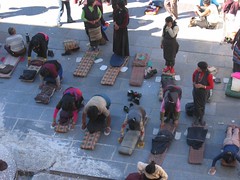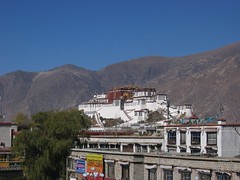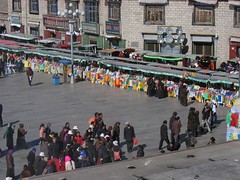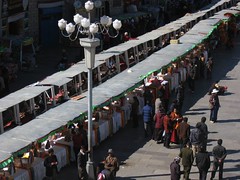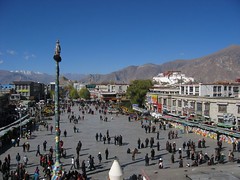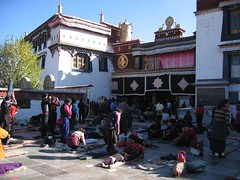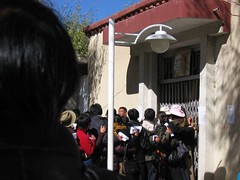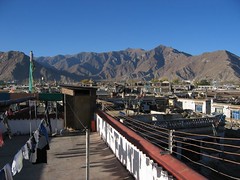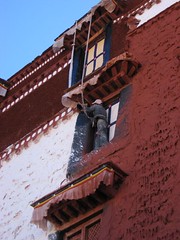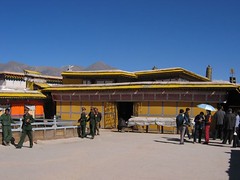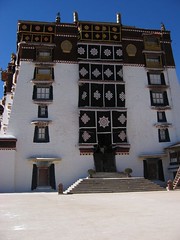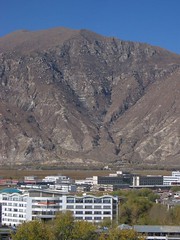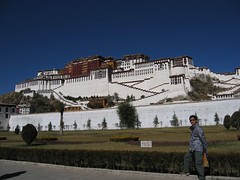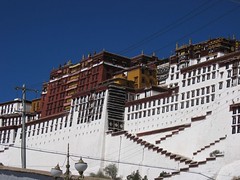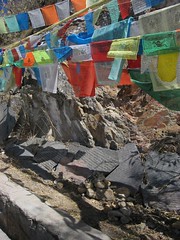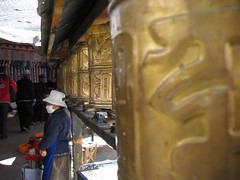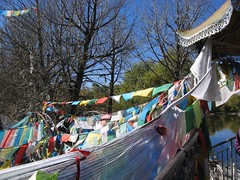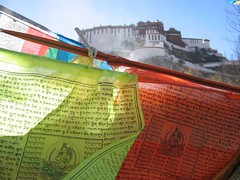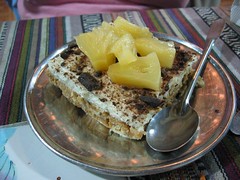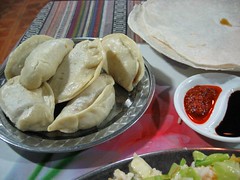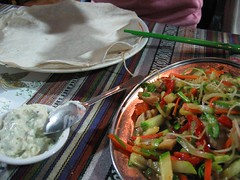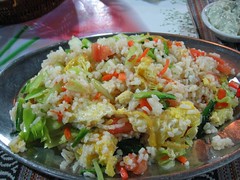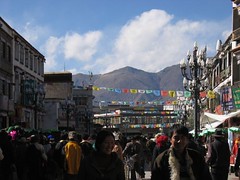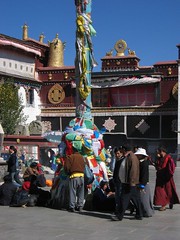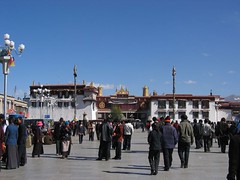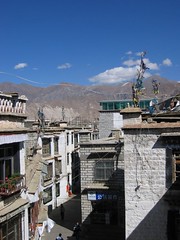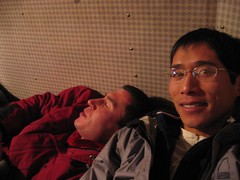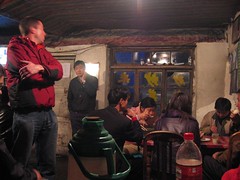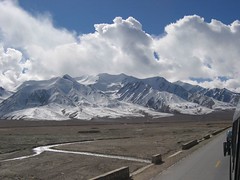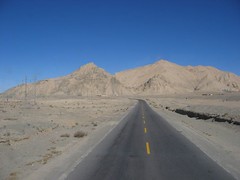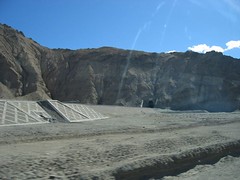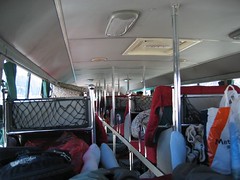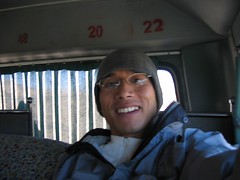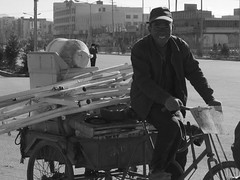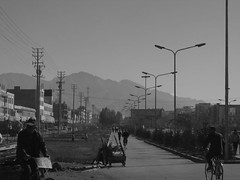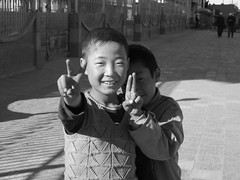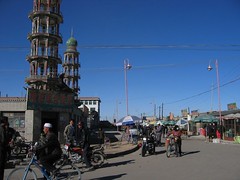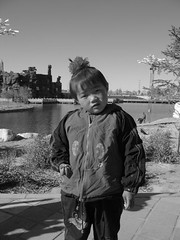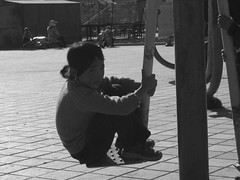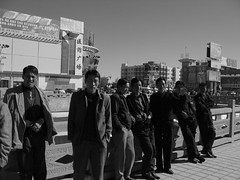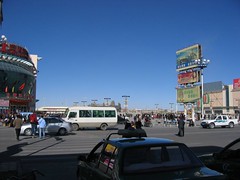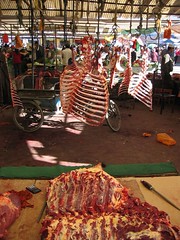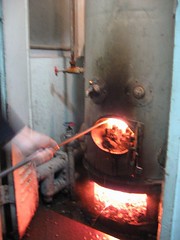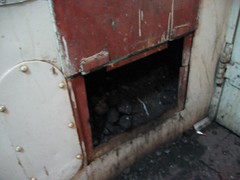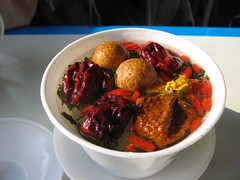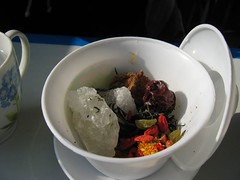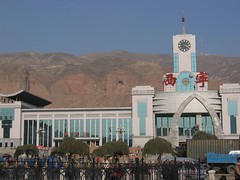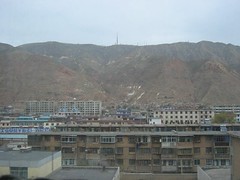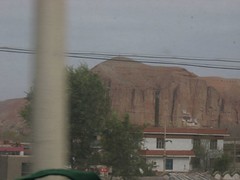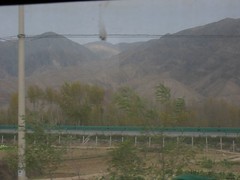I have been in Golmud for three or four days now, getting acclimated to the altitude (thin air) and trying to figure out how to sneak into Tibet without paying for the extortionate Tibetan Travel Permit (1700 RMB through the official China International Travel Service) for a bus to Lhasa. A couple visits to the bus station (crawling with police) and asking around has me hopeful that I've spoken to the right folks. It's actually not a big deal as many people have been getting into Tibet this way for years. I'm going to pay 750 RMB to get to Lhasa (payment on arrival) for a sleeper bus. The Chinese pay 130-150 RMB for the same trip. The ride will take about 18-24 hours, and will take me over the Tanggu-la Pass at 5180-m (17,000-feet). I've bought an oxygen tank (20 RMB) for the trip. It's supposed to help with the headaches, and a keen safety precaution. Apparently, on the train from Xining to Golmud, we travelled through a 4500-m pass (14,700 feet) and I woke up in the middle of the night out of breath, crampy, and uncomfortable.
Golmud, described in the Lonely Planet, is a desolate outpost, but actually it's quite nice. The sky is clear blue most of the time and there are lots of markets to visit. You can buy a lot of military clothing here for the cold weather. I bought some gloves for 3 RMB. You can buy a thick army trenchcoat for about 80 RMB. A lot of the population here is Muslim, and there is a mosque not too far away. People have been very friendly here.
There are a few touts that have come up offering trips to Lhasa for as low as 200 RMB. That just seems too low to be able to pay off the police at the three checkpoints to Lhasa. Foreigners are required to pay for a travel permit, which is actually just another form of bribery as there is actual permit that you get to show people.
It helps a lot to be able to speak Mandarin in China. I think I have been sheltered from most of the two-tiered pricing system that most foreigners are subjected to. China is so expansive that my horrible Mandarin accent is not a big deal.
You have to bargain a lot in China; even the locals do. I have no idea how over-charged foreigners are in China, but I've been doing great.
I have been ordering food by faking my way through a menu (I am illiterate) and asking for a meat dish and a vegetable dish. It works pretty well. If you go to my flickr site you will see almost every meal I've had in China. I've been paying about 15 RMB for dinner. It helps to meet up with other people with whom to share many dishes.
I met a Vietnam-born American travelling in China for a year who said to me a couple things that I thought was bizarre. The first one was, "Ya gotta admit, China is going to take over Taiwan someday." The other statement was, "Man, China is proof that Communism works." First of all, this guy was a moron, but I didn't care to point this out to him. Let me tell ya, I have no idea what Communism means any more. This place is all about profiteering and free enterprise. The income discrepency in this country is immense. In Xi'an I saw beggars with amputated limbs, scooting around on small boards with wheels, and people clubbing in a nightclub, their tables covered with bottles of Budweisers at 135 RMB ($16) a pop. There are fancy cars driven by fancy yuppies.
A lot of people seem to be afraid that China is going to top the States as the largest superpower in a decade. Yeah, I think it might be sooner than that. The modernization that is occurring here is staggering. Everywhere are high-rise apartment buildings and multi-laned highways in construction.
I used to joke with my friends that if you wanted to get rich, make a piece of junk and sell it to yuppies in the States. No, I think you should do that but sell it to the Chinese. The rubbish they sell on tv is incredible. I don't think there is anything such as false advertising. There is a device that can only described as a "torture rack" that has a chin strap and a place to hook your feet, which you crank to lengthen. It is supposed to make you taller and/or help with arthritis. There are countless testimonials to prove that this works.
I can't access blogs on the internet in China. I suspect this has something to do with free speech limitations here, that's why my blog postings have been erratic.
Anyways, as I head for Tibet, these are a few of my thoughts on China.
